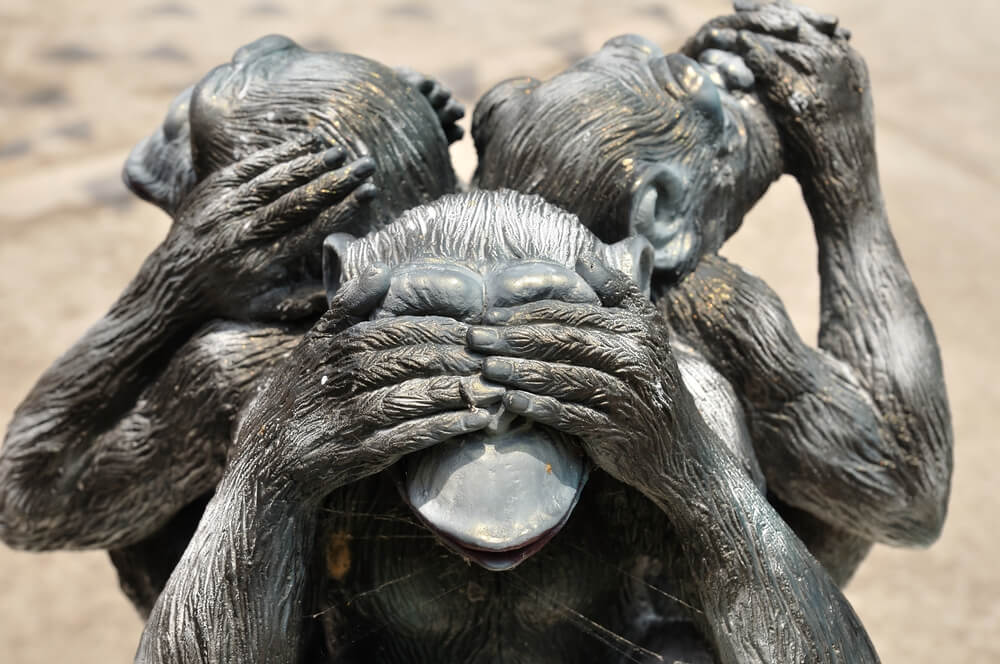Almost everyone has seen the metaphorical representation of the three wise monkeys. It contains the figures of a monkey covering the mouth, another that covers the ears and another that covers the eyes. It is a wooden sculpture dating from the eighteenth century and which refers mainly to the way of “living well”, in the broad sense of the term.
The metaphor of the three monkeys has to do with a maxim of Confucius that can be translated as not speaking, not hearing and not seeing evil, this would be one of the conditions to live well with yourself and with others.
- The sculpture is located at the entrance of the sacred stable at Toshogu Shrine in Japan.
- Specifically in a hilltop city north of Tokyo.
- Each of the monkeys has a name: Mizaru.
- Kikazaru and Iwazaru.
- In order.
- These names mean: not to see.
- Not to hear.
- Not to say.
- But what does this have to do with living well?.
Everything seems to indicate that the sculpture is inspired by a maxim of Confucius. This maxim says, “Don’t see evil, don’t hear evil, don’t talk to evil. “Therefore, the fundamental meaning is not to completely isolate yourself from the world, but to refuse to come into contact with evil. It’s part of the art of living well.
“If you can avoid evil, there is no point in accepting it. ” – Térencio-
Confucius’ maxim invites you to refuse to come into contact with evil, but does that make sense?The first thing that comes to mind is that we can refuse to see, hear or talk about evil, but will it make you disappear from the world?We could ask ourselves another question: how will knowing or talking about evil improve our lives?
There is a paranoid area in us that is pleased in this contact with evil, we can say that being aware of the evil of the world protects us from this threat that is evil, for example, if you know that in a given street there are many thefts, that would avoid that, which would reduce the risk of being robbed.
It makes sense, but in the end it’s not so much. First, because evil is the exception and not the norm in the world. It is true that we all have a destructive aspect, but the common thing is that it does not come to be classified as evil. Many more people live honestly and constructively.
Second, it has been shown that getting nervous and tense is one of the factors abusers assess before attacking someone. The same could be said of other similar examples. In other words, perpetrators and victims share common codes.
If we can live without knowing what the latest advances in quantum physics are, why can’t we live without knowing the wicked acts of the world?We can say that there is reason to believe that witnessing cruel acts, in person or on television, increases our destructiveness or potential victimization.
This has to do with mirror neurons. The brain can’t always distinguish reality from fantasy, so we’re afraid of horror movies, we know perfectly well that they’re fiction and yet they trigger concrete emotions in us.
Therefore, seeing, hearing or talking about evil can have a very toxic effect on our lives, it is possible that this feeds the monster of fear or the monster of evil in us, they are there and they can grow if we feed them. Confucius was right.
The sculpture of the three monkeys is a guide to living well and a basic principle of mental hygiene. Seeing, listening to, or talking about evil is something that can lead to a state of distress. Suddenly we forget that, statistically and mathematically, there are more good people than bad people in the world. On the other hand, we believe the opposite: we feel that we are in a reality where something very bad can happen to us at any time.
Many will wonder: what if we are really victims of real evil?In this case, Confucius’ approach remains valid. The best thing to do in this experience is to work to dilute it and separate it from us, to prevent it from becoming an axis around which our lives revolve.
The scandalous, the wicked and the cruel are topics that sell and attract attention, everything is part of a kind of pornography of pain that terrorizes and fascinates every human being, that terror and fascination are neurotic feelings.
The art of living well has to do with working from the perspective from which we understand the world. In this sense, the decision to refuse to witness or to spread acts of evil is of great force.

